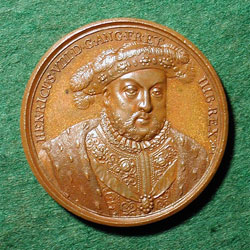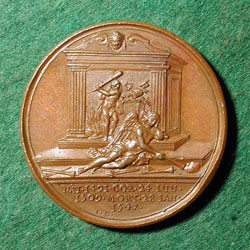

|
HENRY VIII |
|
|
Henry VIII (1491-1547), King of England (1509-1547), was the second son of Henry VII and Elizabeth, daughter of Edward IV. He became heir on the death of his elder brother, Arthur, and married Arthur’s widow, Catherine of Aragon, soon after his accession. His aggressive foreign policy, administered by his lord chancellor Cardinal Thomas Wolsey, depleted the royal treasury. Wolsey’s ill-timed decision to abandon an alliance with Charles V, just prior to the latter’s defeat of Francis I at the Battle of Pavia , led to his downfall. He was replaced by Thomas More. Henry now urgently sought a divorce from Catherine of Aragon, with whom he had so far failed to produce a male heir. Pope Clement VII’s refusal to grant the divorce resulted in Henry presiding over the first stages of the English Reformation with the support of Thomas Cromwell. The English church separated from Rome and in 1533 Henry divorced Catherine and married Anne Boleyn, mother of the future Elizabeth I. In 1535 Anne was executed for adultery. Thomas More was also executed for refusing to accept Henry as supreme head of the Church of England. Henry, who had been rewarded with the title of Defender of the Faith by the pope for his criticism of Martin Luther, was however resistant to the introduction of Protestantism. Henry then married Jane Seymour, who died shortly after the birth of the future Edward VI. His next marriage, to Anne of Cleves, ended in divorce. Shortly after, he married Catherine Howard, who was executed in 1542, and finally Catherine Parr, who survived him. (From O’Brien) Henry VIII is a major figure in English history, not so much for his having had six wives, but rather for the fact that during his reign Henry presided over the beginnings of the English Renaissance and the English Reformation. He is particularly remembered for his break with Rome and the dissolution of the monasteries. |
|